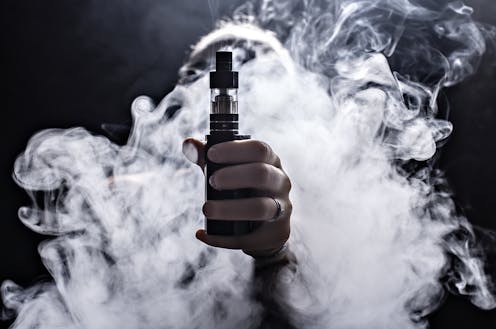
Smoke and Mirrors: The Myth of Healthy Vaping
1. The Allure of the Vapor
Vaping devices have captivated millions worldwide, presenting themselves as sleek, modern, and less harmful alternatives to traditional smoking. These gadgets come in various shapes, sizes, and colors, often paired with enticing flavors like cotton candy, mango, and crème brûlée. The allure lies in their promise: an easier, less harmful way to quit smoking.
Sarah, a former smoker, recalls: “The colorful vape pens and the promise of healthier nicotine consumption seemed revolutionary. I thought I’d finally found my solution.” Yet, for many like Sarah, this promise often proves too good to be true. The seductive appeal of vaping obscures its potential dangers, leading countless users to trade one harmful habit for another.

2. Health Effects: Vaping vs. Smoking
At first glance, vaping might seem like the lesser evil compared to smoking. Without combustion, there’s no tar, no ash, and fewer carcinogenic substances. However, the reality is far more complex.
E-cigarettes contain several harmful substances, including:
- Nicotine: Highly addictive and detrimental to cardiovascular health.
- Propylene Glycol and Vegetable Glycerin: Common base liquids in e-liquids that can form toxic compounds when heated.
- Flavoring Chemicals: Some linked to respiratory damage, such as diacetyl, which is associated with “popcorn lung.”
- Heavy Metals: Including nickel, lead, and chromium, which may leach from the device’s heating elements.
Dr. Emily Chen, a pulmonologist, warns, “While vaping lacks some toxins found in traditional cigarettes, it’s far from safe. We’re observing concerning respiratory symptoms in even young, healthy users.”
Emerging studies also suggest a correlation between e-cigarette use and cardiovascular stress, immune suppression, and respiratory inflammation. The bottom line? Vaping isn’t harmless—it’s a gamble with your health.

3. Marketing Tactics: The Smoke and Mirrors
The vaping industry employs strategic marketing tactics eerily reminiscent of Big Tobacco’s golden age. Their goal? To hook users, particularly younger demographics, and ensure lifetime customer loyalty.
Key strategies include:
- Flavored Products: Exotic and candy-like flavors appeal to younger audiences.
- Tech-Driven Aesthetics: Sleek designs make vaping devices resemble high-tech gadgets rather than smoking tools.
- Celebrity Endorsements: Prominent influencers promote vaping, normalizing its use.
- Health Claims: Misleading advertisements tout e-cigarettes as safer alternatives, despite insufficient evidence.
John, a former marketing executive for a major vaping brand, admits, “The aim was to attract new users and keep them hooked—not to help them quit.”

4. The Long-Term Health Risks: A Cloudy Future
As a relatively new trend, vaping’s long-term health consequences remain largely unknown. However, preliminary research and case studies highlight several alarming trends:
- Lung Injuries: EVALI (E-cigarette or Vaping Product Use-Associated Lung Injury) has been linked to severe respiratory damage.
- Addiction: High nicotine levels in e-liquids can perpetuate dependence.
- Cardiovascular Risks: Studies suggest that vaping may increase blood pressure and the risk of heart disease.
- Mental Health Impacts: Adolescents who vape report higher rates of anxiety and depression.
Without robust regulation and long-term studies, users are essentially participating in a live experiment, with their health as the variable.
5. Choosing Health Over Hype
Breaking free from nicotine addiction requires more than replacing cigarettes with e-cigarettes—it demands a comprehensive approach to wellness. Nicotine replacement therapies (NRTs), behavioral counseling, and support networks have proven effective for smoking cessation.
Governments and health organizations must also tighten regulations around vaping products, ensuring transparent labeling, banning youth-centric flavors, and holding manufacturers accountable for misleading claims.
For individuals, the message is clear: prioritize your health and seek proven, evidence-based methods to quit smoking. The myth of healthy vaping is just that—a myth.




You must be logged in to post a comment.